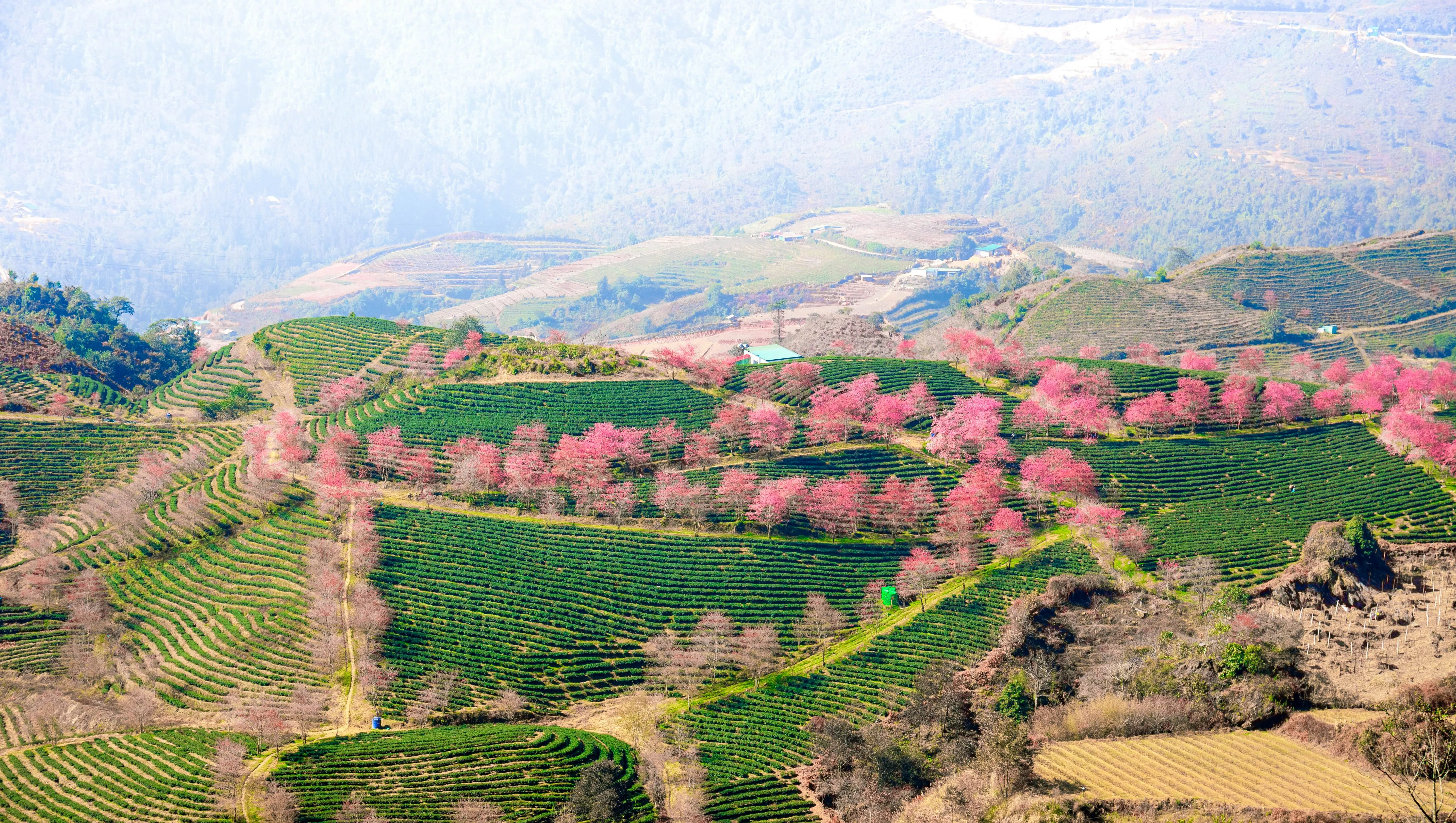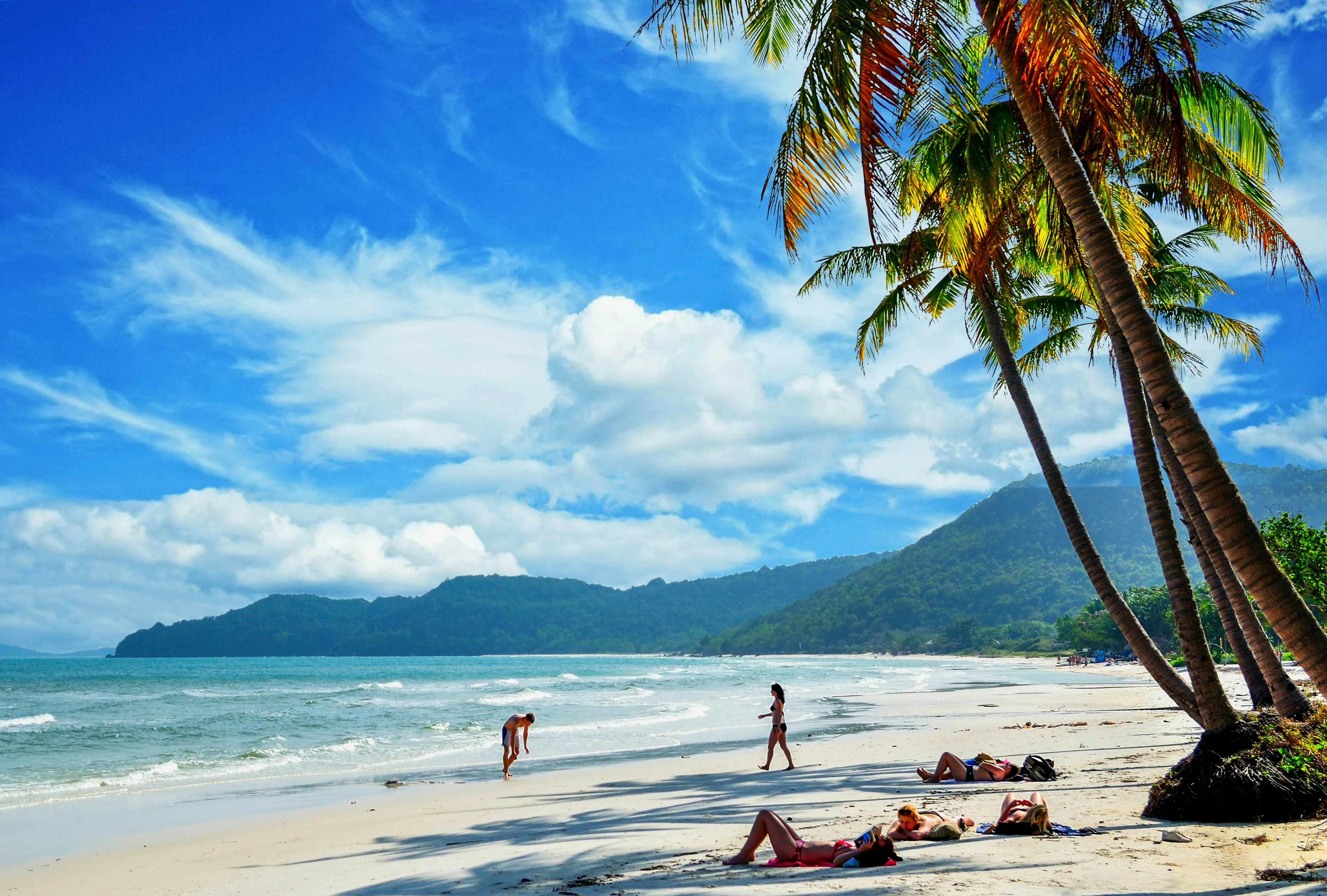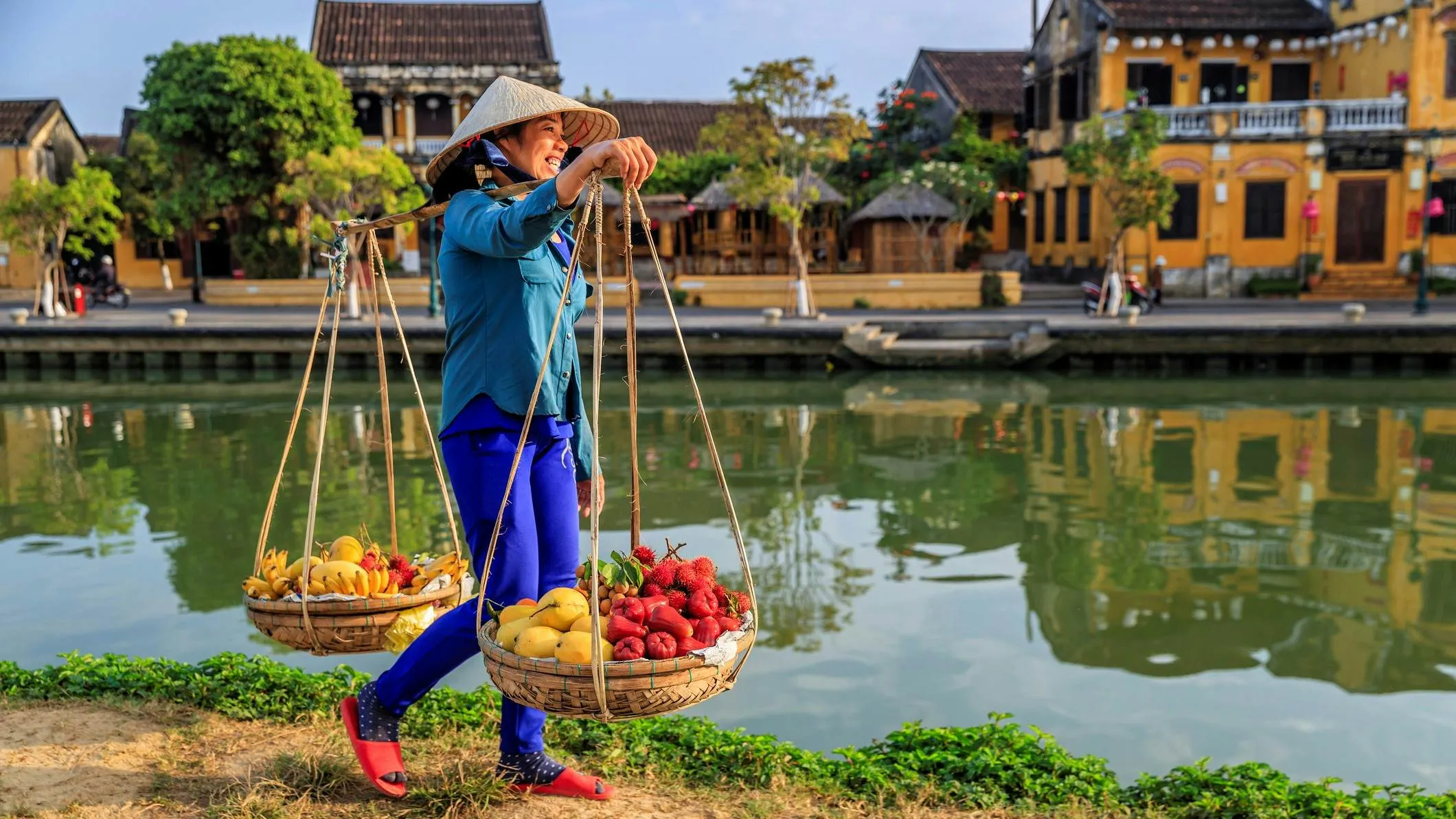Vietnam is a country that ignites the senses and captures the soul. From the bustling streets of its dynamic cities to the tranquil beauty of its natural landscapes and the profound depth of its history and culture, it offers an incredibly rich tapestry of experiences. For the first-time visitor, deciding where to go in Vietnam first time can feel overwhelming with so many incredible options available. This guide is crafted to help you navigate those choices and plan an unforgettable initial journey through this captivating Southeast Asian gem.
Vietnam stretches over 1,000 miles from north to south, resulting in diverse climates and landscapes across its regions. Understanding these differences is key when deciding where to go in Vietnam first time, as it impacts the best time to visit specific areas and the types of experiences you’ll encounter. Generally, the country is divided into three main regions: the North, the Central coast, and the South.
The North is known for its cooler climate, dramatic mountains, and rich history, home to the capital Hanoi and iconic sites like Halong Bay and the highlands of Sapa. Central Vietnam features a mix of historical cities, beautiful beaches, and ancient trading ports, with Hue, Danang, and Hoi An being key highlights. The South is characterized by its warm, tropical weather year-round, vibrant cities like Ho Chi Minh City, the intricate waterways of the Mekong Delta, and relaxing islands like Phu Quoc. Each region offers a distinct flavor of Vietnam.
Northern Vietnam: Culture, History, and Natural Wonders
The North is often the starting point for those deciding where to go in Vietnam first time, offering a deep dive into the country’s history and some of its most breathtaking natural scenery.
Hanoi: The Bustling Capital
Hanoi is the historical heart of Vietnam, a city where ancient traditions meet modern life. For a first-timer, exploring the Old Quarter is essential. This maze of narrow streets, each historically named after the trade once conducted there, is a vibrant hub of activity, street food, and culture. Wandering through its alleys, you’ll encounter ancient temples tucked beside colonial architecture and discover the rhythms of daily Vietnamese life.
Hanoi’s culinary scene is legendary. It’s the birthplace of Pho, but offers so much more. Don’t miss trying Bun Cha (grilled pork with vermicelli) or Egg Coffee. The city’s lakes, like Hoan Kiem Lake, provide tranquil spots amidst the urban energy, and its historical sites, such as the Temple of Literature, offer glimpses into its past. Hanoi provides a fantastic introduction to Vietnamese urban culture and food for first-time visitors.
What to Eat in Fort Worth – A Culinary Deep Dive
Discover the Top Restaurants in Denver – A Culinary Journey
Discover Where to Visit in Las Vegas
 An aerial view of apricot trees in bloom on O Long tea hill near Sapa, Vietnam
An aerial view of apricot trees in bloom on O Long tea hill near Sapa, Vietnam
Halong Bay: Iconic Karsts
A UNESCO World Heritage site, Halong Bay is arguably one of Vietnam’s most iconic natural wonders. Cruising through the emerald waters dotted with thousands of towering limestone karsts and islets is an unforgettable experience. Overnight cruises are highly recommended, allowing you to witness the bay’s beauty at sunset and sunrise, kayak through hidden caves, and swim in secluded coves.
Halong Bay offers a serene escape from the bustling cities and a chance to connect with Vietnam’s stunning geological formations. While popular, its unique landscape makes it a top priority for many figuring out where to go in Vietnam first time. Nearby Lan Ha Bay offers similar scenery with fewer crowds, providing a peaceful alternative.
Sapa: Highland Beauty and Trekking
In the far north lies Sapa, a gateway to the majestic Hoàng Liên Sơn mountain range and stunning terraced rice fields. This region is home to various ethnic minority groups, and trekking through the hills to visit their villages offers a profound cultural experience. The scenery is breathtaking, especially during the rice harvest season.
Sapa provides a stark contrast to Vietnam’s coastal and urban areas, focusing on natural beauty, outdoor activities, and cultural immersion. It’s an excellent choice for adventurous first-timers seeking hiking opportunities and interaction with local communities amidst dramatic landscapes.
Central Vietnam: Ancient Towns, Beaches, and Imperial History
Central Vietnam offers a mix of cultural heritage, historical depth, and coastal relaxation, making it a varied destination for a first trip.
Hoi An: The Lantern Town
Hoi An’s Ancient Town, another UNESCO World Heritage site, is a beautifully preserved trading port with a unique blend of architectural styles – Vietnamese, Chinese, Japanese, and European. Famous for its colorful lanterns that light up the streets at night, Hoi An possesses a magical, timeless charm.
Beyond its picturesque streets, Hoi An is renowned for its tailor shops (where you can get custom clothes made quickly), vibrant markets, and proximity to beautiful beaches. Its culinary scene is also a highlight, with local specialties like Cao Lau and White Rose dumplings. Hoi An is often a favorite for first-time visitors seeking atmosphere, culture, and charm.
Hue: Imperial City
Hue served as the imperial capital of Vietnam for over a century. Its most prominent feature is the vast Imperial Citadel, a walled city within a city, containing palaces, temples, and the Forbidden Purple City. Exploring these historical grounds offers a deep dive into Vietnam’s royal past.
Located on the Perfume River, Hue also boasts impressive royal tombs scattered throughout the surrounding hills and offers a glimpse into traditional Vietnamese architecture and spiritual beliefs. Hue’s cuisine, influenced by its imperial past, is distinct and refined. For first-timers interested in history and imperial culture, Hue is an indispensable stop.
Danang: Coastal Hub
Danang is a modern coastal city that serves as a convenient entry point and base for exploring Central Vietnam. While it has its own attractions like My Khe Beach (China Beach) and the Marble Mountains, its primary appeal for first-time visitors often lies in its strategic location between Hoi An and Hue, connected by the scenic Hai Van Pass.
Danang offers good infrastructure, nice beaches, and a relaxed urban atmosphere. It’s a great place to unwind for a day or two and provides easy access to the historical wonders nearby, making logistical travel simpler when deciding where to go in Vietnam first time.
Southern Vietnam: Dynamic Cities and Lush Deltas
The South is characterized by its energetic pace, tropical climate, and the iconic Mekong Delta.
Ho Chi Minh City (HCMC): The Southern Metropolis
Ho Chi Minh City, formerly Saigon, is Vietnam’s largest and most dynamic city. It’s a whirlwind of motorbikes, street vendors, towering skyscrapers, and historical landmarks. HCMC offers a glimpse into modern Vietnamese urban life while still holding onto layers of history.
Key sites for first-timers include the War Remnants Museum, the Reunification Palace, and the Notre Dame Cathedral. The city is also a paradise for street food lovers, offering countless delicious options on every corner. HCMC’s energy is infectious and provides a fascinating contrast to the more traditional North and Central regions.
Cu Chi Tunnels: A Historical Site
Just outside HCMC lies the Cu Chi Tunnels, an immense network of underground passages used by the Viet Cong during the Vietnam War. Visiting the tunnels offers a poignant and visceral understanding of the war and the ingenuity of the Vietnamese people. You can even crawl through some of the widened sections.
This historical site provides a significant educational experience about a pivotal period in Vietnam’s history. For first-time visitors to the South, it’s a highly recommended, albeit sobering, excursion from HCMC.
Mekong Delta: Life on the Water
Known as Vietnam’s “rice bowl,” the Mekong Delta is a lush, fertile region where life revolves around the mighty Mekong River and its countless tributaries. Exploring the delta by boat reveals floating markets (like Cai Rang), fruit orchards, rice paddies, and small villages.
The Mekong Delta offers a slower pace and a different perspective on Vietnamese life, centered on agriculture and waterways. It’s a fascinating area to visit for a day or two from HCMC, experiencing the unique culture of this riverine landscape.
Phu Quoc: Island Paradise
For those seeking relaxation and beautiful beaches, Phu Quoc island in the Gulf of Thailand is an excellent choice. It boasts white-sand beaches, clear waters perfect for snorkeling and diving, and lush interior with pepper plantations and national parks.
Phu Quoc has gained international recognition as a tropical getaway. If your first-time visit to Vietnam includes time for unwinding on a beach, Phu Quoc offers a beautiful and increasingly popular option for sun, sand, and seafood.
 People on the white-sand beach under palm trees on Khem Beach, Phu Quoc island, Vietnam
People on the white-sand beach under palm trees on Khem Beach, Phu Quoc island, Vietnam
Beyond “Where”: Essential Tips for First-Time Visitors
Choosing where to go in Vietnam first time is just the beginning. Here are some practical tips to enhance your trip.
When to Visit
Vietnam’s elongated shape means there’s no single “best” time for the entire country. Generally, the dry season (roughly November to April) is favorable for most regions. However, the North can be cold in winter (Dec-Feb), while the South is hot year-round. Central Vietnam has a storm season usually from September to December. Research the specific regions you plan to visit to find the ideal travel window. Avoiding major holidays like Tet (Vietnamese New Year) is advisable due to crowds and price hikes.
Getting Around
Vietnam has a good network of domestic transportation. Flights are the fastest way to cover long distances (e.g., Hanoi to HCMC). Overnight trains and buses are affordable options for traveling between cities and experiencing the scenery. Within cities, ride-sharing apps like Grab, traditional taxis, and motorbike taxis are readily available. Walking is great for short distances in places like Hoi An’s Old Town or Hanoi’s Old Quarter, but be prepared for heat and traffic.
 A boat floats by islands in Halong Bay, Vietnam
A boat floats by islands in Halong Bay, Vietnam
Budgeting
Vietnam remains a very budget-friendly destination. You can travel and eat well on a modest budget. Expect to pay around $10-15 for a hostel bed, $10-40 for a basic private room, and very little for local transport and street food (often $1-3 per dish). A sit-down meal at a local restaurant might cost $5-15 per person. Activities like Halong Bay cruises or trekking tours will be bigger expenses but offer great value.
Cultural Sensitivity
Vietnamese culture values politeness and respect. When visiting religious sites like temples or pagodas, dress modestly, covering your shoulders and knees. Remember to remove your shoes before entering someone’s home or certain religious buildings. Learning a few basic Vietnamese phrases like “Xin chào” (hello) and “Cảm ơn” (thank you) will be greatly appreciated by locals and can enrich your interactions.
Food Adventures and Safety
Trying street food is a fundamental part of the Vietnamese experience. It’s delicious, cheap, and everywhere. To minimize risks, observe where locals eat – busy stalls with high turnover are usually the safest bet. Always drink bottled water; tap water is not potable. Embrace the adventure of trying new dishes; every region, and often every town, has its own specialties.
Navigating Traffic
Traffic in Vietnamese cities, especially Hanoi and HCMC, is famously chaotic. Motorbikes are the dominant form of transport. When crossing streets, walk slowly and steadily across, allowing traffic to flow around you. Do not expect cars or motorbikes to stop completely. Renting a motorbike is only recommended for highly experienced riders comfortable with unpredictable conditions.
 A woman carries baskets with fruits along a canal in the Old Town of Ha Noi, Vietnam
A woman carries baskets with fruits along a canal in the Old Town of Ha Noi, Vietnam
My Take: Why Vietnam Stays With You
As a content creator fascinated by the intersection of travel, culture, and food, Vietnam holds a special place in my heart. While the iconic landscapes and historical sites are undoubtedly magnificent, it’s the connection with the people and the stories embedded in the food that truly resonate. Every bowl of pho, every banh mi, every regional specialty tells a tale of history, tradition, and resilience. It’s this human element, this tangible link to the past and present through shared meals and daily life, that makes Vietnam so much more than just a place to visit. It’s a place to experience and live alongside a rich culture.
For those considering where to go in Vietnam first time, remember that this country isn’t just about ticking off famous landmarks. It’s about immersing yourself in the vibrant street life, savoring the incredible flavors of its diverse cuisine, understanding the layers of its complex history, and connecting with the warmth of its people. Whether you choose the historical North, the charming Central coast, or the dynamic South, your first trip will undoubtedly leave you with memories that last a lifetime and a desire to return.
 A woman sells homemade rice cakes filled with black sugar at the market in Lang Son province, Vietnam
A woman sells homemade rice cakes filled with black sugar at the market in Lang Son province, Vietnam
Frequently Asked Questions (FAQ)
Q: How many days should I spend in Vietnam for my first trip?
A: To experience the highlights across different regions, a minimum of 10-14 days is recommended. This allows time to visit a combination of North, Central, and South, factoring in travel time between locations. If you have less time, focus on one or two regions.
Q: Is Vietnam safe for first-time tourists?
A: Yes, Vietnam is generally safe for tourists. Petty theft like pickpocketing can occur in busy areas, so be mindful of your belongings. Traffic is a significant hazard, so exercise caution when walking and crossing streets. scams targeting tourists exist but are avoidable with common sense.
Q: Do I need a visa for Vietnam?
A: Visa requirements vary depending on your nationality and length of stay. Many nationalities can enter visa-free for a limited time. Others may need to apply for a visa in advance or obtain an e-visa. Check the latest requirements based on your passport before traveling.
Q: What currency is used in Vietnam?
A: The official currency is the Vietnamese Dong (VND). US Dollars are sometimes accepted in tourist areas, but it’s best to use VND for daily transactions. ATMs are widely available in cities, and currency exchange services are common.
Conclusion
Choosing where to go in Vietnam first time is an exciting challenge, offering a wealth of possibilities from historical cities and cultural hubs to stunning natural wonders and relaxing islands. Whether you prioritize history and mountains in the North, ancient charm and beaches in the Center, or vibrant city life and river deltas in the South, Vietnam promises an enriching and unforgettable adventure. Prepare to be captivated by its beauty, its flavors, and its people – your first journey is just the beginning.
